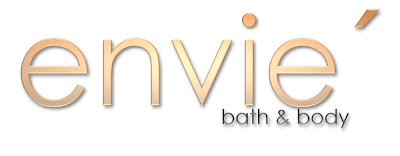

The craze to "go green" and buy "organic" and "natural" is growing exponentially. The proponents of "natural" speak highly of the benefits and tend to leave out the possible risks, while the big name cosmetic chemists will tell you there is no harm in using synthetics. So, I'm offering my unbiased perspective as a cosmetic chemist that has developed a natural bath and body product line. I'll keep it short.
If you flip through the previous posts you'll find that I have defined quite a few of the typical ingredients in cosmetics and personal care products. As a chemist, I have a healthy respect for chemicals; they serve their purpose and most are harmless in the concentrations used. What synthetics lack is the nutritive benefits that "natural" ingredients have. I refer to natural in quotations for two reasons. 1) There is no FDA standard for what is considered natural. Anyone can make the claim whether its true or not. 2) Chemicals are "natural" too! Every element in the periodic table comes from the earth. Those elements come together to make both natural and synthetic ingredients alike.
There are two problems with synthetics that I consider significant. The first problem relates more to vanity than anything else. Synthetic ingredients (silicone oils for example) cannot be absorbed by the skin. They sit on top of the skin forming a protective barrier (good), but don't provide any health benefits. The second problem I find with synthetics is that the chemicals end up in our water supply and reek havoc on our environment and ecosystem. They also increase air pollution. With natural ingredients, you give your skin vitamins, minerals, essential fatty acids, alpha hydroxy acids, etc; a lot of which your body cannot produce on its own. Going natural means less pollution, better air quality (indoor and outdoor), less chemicals in the water run-off and higher profitability to farmers-- local, nationwide and global.
Synthetic ingredients are often noted for "dermal irritation" especially when being discussed by natural product developers. However, it is important to note that natural ingredients can cause just as much if not more dermal irritation and allergic reactions. The truth is, allergies exist no matter how we try to eliminate them. Actually quite a few essential oils are known to cause skin sensitization and there are others that are toxic as well.
The moral of the story is synthetics and naturals have an equal list of pros and cons. It is up to the consumer to decide what is important and make purchases based on that decision. I have used synthetic personal care products up until now and they served me well. But at this point in my life, I feel a responsibility to protect my environment and to give my body more benefit than harm.
Whatever you choose, glam it up!





